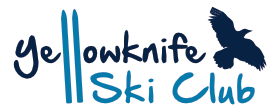
The Yellowknife Amateur Radio Society (YARS) encourages the use of digital modes. In contests, such as the RAC/ARRL Field Day contest at the end of June, digital modes are encouraged. Extra points are given for each contact or QSO. But as with all contests, contests are actually exercises designed to get amateur radio operators to test their equipment and operate it in adverse conditions. Contests are in fact simulated emergency exercises.
The grand-daddy of all digital modes, in a sense, is Morse Code (CW). A carrier is switched on and off. Various durations of on and off are combined to represent characters - International Morse Code. It is relatively slow and typically around 13-30 words per minute. Some skilled operators can send around 40 and the world record is about 216 words in one minute.

Digital voice encodes speech into a data stream before it is transmitted. DSTAR and System Fusion are examples. These are typically available through the radio makers known as ICOM, Kenwood and FlexRadio and, in the case of Fusion, YAESU. YARS is in possession of YAESU Fusion repeaters and has an experimental one running in analog mode in Yellowknife (at VE8BC's QTH) at receive 444.000 MHz and transmit at 449.000 MHz.

Amateur television (ATV) can run in fast can TV or slow scan TV (SSTV). ATV is traditionally on the 70 cm band. SSTV is normally used on the HF band. There is also Amateur high definition TV.
Most amateur digital modes are used by transmitting audio output into the microphone of a transmitter. Signals are received by inputting the audio of a radio receiver into the microphone of some device to recover the data and process it. In this day an age, that device is a computer. Some enthusiasts might still use such things as a teletype or dumb terminal or a fax machine.
Digital modes include the following (from Wikipedia):
- Amateur teleprinting over radio (AMTOR)*
- D-STAR (Digital Data) a high speed (128 kbit/s), data-only mode.
- Hellschreiber, also referred to as either Feld-Hell, or Hell a facsimile-based teleprinter*
- Discrete multi-tone modulation modes such as Multi Tone 63 (MT63)*
- Multiple frequency-shift keying (MFSK) modes such as
- Packet radio (AX25)
- Amateur Packet Radio Network (AMPRNet)
- Automatic Packet Reporting System (APRS)*
- PACTOR (AMTOR + packet radio)*
- Phase-shift keying:
- 31 baud binary phase shift keying: PSK31*
- 31 baud quadrature phase shift keying: QPSK31*
- 63 baud binary phase shift keying: PSK63*
- 63 baud quadrature phase shift keying: QPSK63
- Frequency Shift Keying:
- Radioteletype (RTTY) Frequency-shift keying*
We have used many of these modes (denoted by the "*") and have capability in most of them. During Field Day 2021 we managed to copy the Bulletin in CW, PSK31, RTTY and MFSK. By far our favourite mode is MFSK in that there is forward error correction which is a statistical technique that makes a message resilient to atmospheric distortion - but it comes at a cost - speed. FT8 also has this and it is also one of our favourite modes. During the 2020 Field Day we ran exclusively in digital modes. The possible modes available are too numerous to mention.
There is another mode of digital operation - through the Internet. Echolink and the Internet Radio Linking Project (IRLP) essentially allow one to either communicate through a computer microphone through the Internet and then to another computer hooked up to an amateur radio repeater. Sometimes one radio in the system is dropped and one communicates via a computer to another computer hooked up to an amateur radio repeater. These systems allow one to communicate via a VHF or UHF repeater throughout the world. It is not dissimilar to VOIP.
We tend to use certain software for digital modes:
- MMSSTV (see: https://amsat-uk.org/beginners/iss-sstv/ if you want to pick up the International Space Station)
- FLDIGI (for most digital modes and message formatting into ICS format)
- WJST-X (for JT65, MSK144, WSPR, FT8 etc.)
Digital modes offer many advantages including something called coding gain. In the North, radio propagation conditions can be hostile and coding gain gives a bit of an advantage. Quite often we might be on one frequency band which we think is inactive, we fire off a test digital signal and then someone comes back to us. We achieved an unexpected QSO with Australia this way. For many of us, this experience is not unlike the joy one gets from fishing...
(Incidentally, we tend to use obsolete laptops for this work. They are completely sufficient for the running of these modes (except perhaps for modes which use lots of processing power - such as ones that use forward error correction.)


